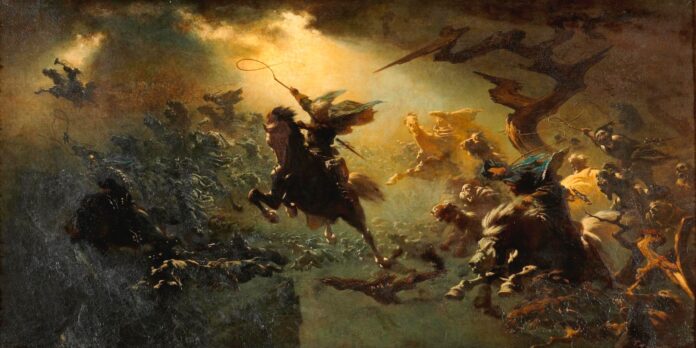by Kelly Coleman ’23
For many years, the “Chrismastime Song” have been a loved tradition across the nation, signaling to all that Halloween is over and that the holidays are but a few months away. Careful research, however, has found these songs to contain themes disturbing and occult. Now, I hear your words of doubt, but if you listen close, you may find your very world rocked to its core. I have been conducting deep research over the past months in order to reach the truth nature of these holiday anthems; I have compiled just a few of my findings in this article for your education.
Paul McCartney, known for being one of the three most talented members of The Beatles, also had a successful solo career, during which he released the single “Wonderful Christmastime.” Despite the name, however, this song and its accompanying music video are perhaps some of the most disturbing pieces of Christmas media ever released. The video opens with pub-goers enjoying their Christmas when they are suddenly ambushed by Paul McCartney, who quickly summons his ghostly entourage.
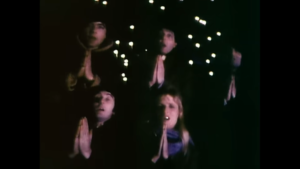
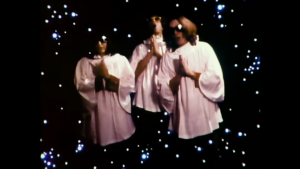
From here on out, the video descends from any dreams of normalcy into the realm of nightmares. Ghastly apparitions flash the screen. Ethereal Horses and Jewels fly through the sky while unearthly lights spew from Paul McCartney’s mouth; astral spirits wail as they fly about. McCartney assaults the viewer with promises of happy holidays, yet the video prophesizes anything but. The pub-goers themselves display veneers of joy, but something is clearly amiss here. Just look at how they form a conga line (something no one does willingly in real life), their forced smiles as they accompany Paul McCartney as he serenades them with Holiday Cheer. These people are not joyous: they’re afraid. And they have every reason to be. This is Paul McCartney’s personal hell, and they have no chance of escape.
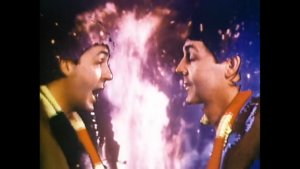
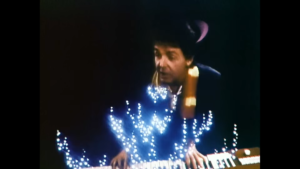
Frosty the Snowman
“Frosty the Snowman,” a song erroneously played for children, portrays the happy tale of a snowman come to life. But if one chooses to examine these lyrics deeper, they find an extremely disturbing and sinister story here. At the end of the song, shortly before his death at the hands of the sun, Frosty professes: “Don’t you cry, I’ll be back again someday!” This is perhaps one of the most loaded lines in all the Christmas mythos. Despite his imminent demise, Frosty seems confident in his return. Is Frosty ignorant of the concept of death and its consequences? Does he possess nothing more than the imitation of sentience—alive and able to mimic emotions but unable to ever understand that which lies at the center of our spirit and bridge the gap between the human and his existence as some frigid homunculus? Or, perhaps, is Frosty fully aware of the meaning of his statement? Has he died and been born before, fully aware that he will do so again? How many ages has Frosty seen come and go, empires rise and fall? Are our lives just flashes in his coal-black eyes? “I’ll be back again someday.” Maybe this line isn’t a reassurance, but a threat. He will return.
Jingle Bells
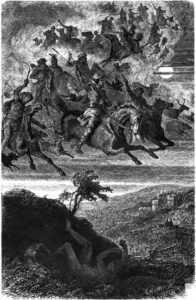
Yes, even this most popular of Christmas tunes is not safe from the thralls of deception. This song is sung mindlessly by many who have never given thought to its lyrics. But if one takes a closer look, they may notice a disturbing pattern. “O’er the fields we go”? “Making spirits bright”? Odd lyrics for a song about Christmas… but perhaps not so odd for a song about none other than the Wild Hunt itself. Don’t believe me? Just take another listen to those lyrics “A slaying song tonight.” Yes, you heard that right. All those references to horses and spirits? Clear Wild Hunt imagery. This song invokes the ghostly procession of the damned, an omen of disaster and death. It’s no coincidence the Hunt is at its most prevalent during the winter months. Am I reaching here? Yes. No. The research is clear. This is not a Christmas song, but a Yuletide song; not Christian, but Heathen.
For reasons I do not know, all of the academic journals I have contacted have declined to publish my work. I can only surmise that Big Christmas is trying to silence me before I can be heard. You may feel burdened by the knowledge I’ve shared today, knowing it could completely dismantle the holidays as we know them, but you must be extremely cautious about sharing my research. He is always watching. He sees you when you’re sleeping, he knows when you’re awake, and he knows where you live. In publishing this article, I have likely placed that very target on my back, and if you are reading this, it may be too late for me. Just know that if I am to befall an “unfortunate accident” in the coming days, then the order came directly from the North Pole. Do not let what I’ve found here be forgotten.


